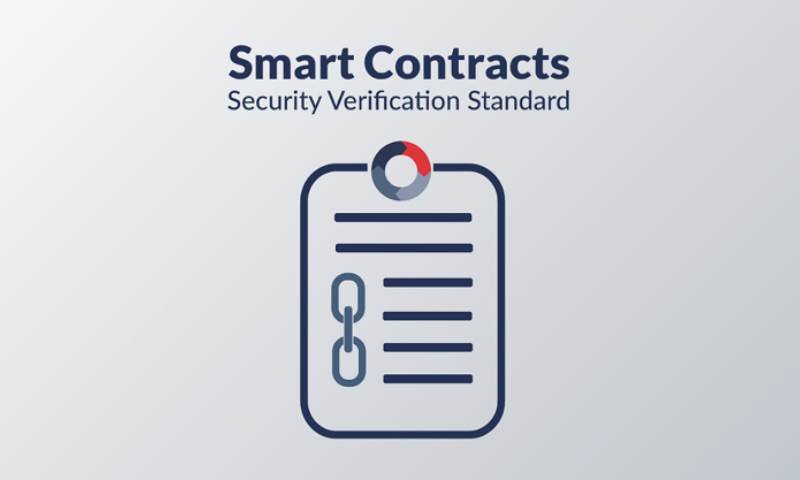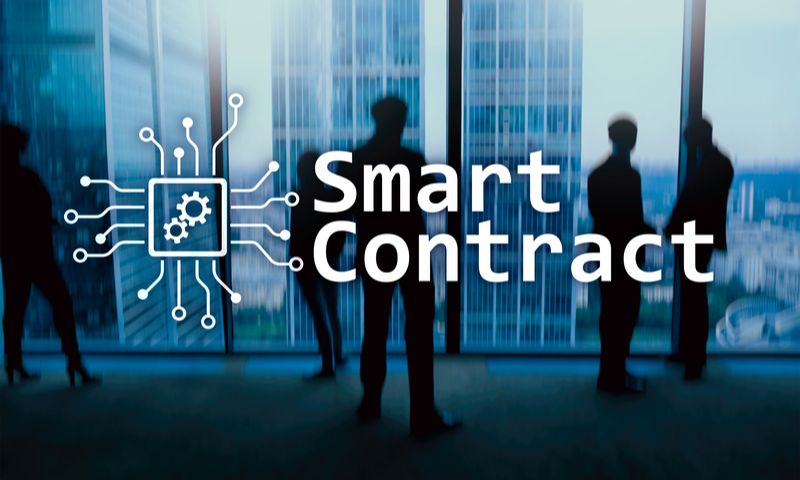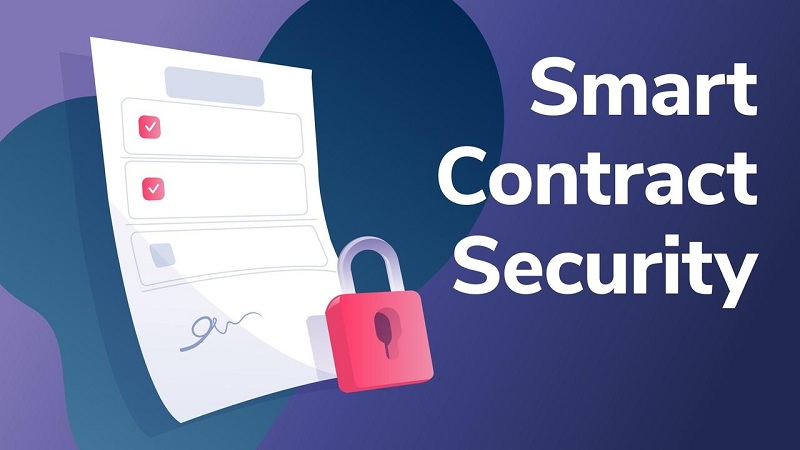In the sprawling world of blockchain tech, securing your smart contract is as vital as the code itself. That’s why I’m here to arm you with the resources for evaluating smart contract security, ensuring your hard work pays off and your code remains unbreakable. Dive into this treasure trove of tools and tips to safeguard your digital masterpieces from the ground up. Let’s leap into the realms of professional audits, scrutinize those automated tools, and master the art of bulletproofing your code against vulnerabilities. With your dedication and the right resources, fortifying your smart contract is no sorcery—it’s science.
Understanding the Landscape of Smart Contract Auditing Services
The Importance of Professional Audits
Before you deploy your smart contract, you must check it for errors. Think of this as proofreading your work before sharing it. But here, a mistake can cost real money. This is why a pro audit is so crucial. They search your code for weak spots that could lead to a hack or failure.
Selecting the Right Audit Firm for Your Smart Contracts
So, you know you need an audit. Now you’ve got to choose who will dig into your code. It’s like picking a doctor for a vital check-up. You want the best. When you hunt for an audit firm, check for a history of strong security work. They must know blockchain security tools and smart contract risks well. Do they use automated analysis alongside a manual check? This combo is gold for finding smart contract bugs.
These firms also test how your contract will run in the wild. They use smart contract testing frameworks to do this. Think of it like a fire drill for your smart contract. It’s making sure the contract can handle stress before it faces real heat.
There’s a big list to look at when checking a contract. It’s called a smart contract audit checklist. Your chosen firm should follow one. It guides them to check every part that could fail or be attacked.
Also, the firm should know about recent common bugs. They should address these before they hit your contract.
Solid smart contract development guides say to always use peer review. It adds another set of eyes on the project. The more pros who look at your code, the better. Each one might see a problem others missed.
And don’t forget about the money. How much gas your smart contract uses is key. If it’s too much, it will cost a lot each time someone uses your contract. A good firm helps you cut gas costs but keep your contract safe.
Look for a firm that walks you through every step. They should offer an audit report sample for you to see. And they must talk about how they can help if they find a problem. You need a team that’s got your back, even after the main job is done.
Remember, your code is your responsibility. Be smart, and choose the right helpers. Your future self, and your users, will thank you. And in the world of smart contracts, strong fences make for the most trusted code.
Leveraging Blockchain Security Tools and Dapp Best Practices
Comprehensive Automated and Manual Analysis Tools
Let’s chat about the tools that keep smart contracts safe. First off, there’s automated analysis. We put code against software that looks for known issues. Think of it like a spell checker, but for code. It catches mistakes fast which is great for saving time.
Now, not all problems are caught by machines. That’s where manual checks come in. This means a person looks over the code, line by line. It’s like having a friend read your essay. They see things you missed. Together, both methods make sure nothing bad slips through.
Dapp Security Best Practices and Solidity Code Review
Dapps are apps on a blockchain. They are cool but also a ripe target for trouble. Keeping them safe means sticking to some rules. One is code review. This is where folks who write code check each other’s work. They find bugs and suggest better ways to do things.
Following best practices is key. This includes writing clean code and testing it a lot. Make sure to do this before the code goes live. It’s like rehearsing for a play before opening night.
For those writing in Solidity, know your stuff. Solidity is like the main character in our blockchain play. It handles the action on Ethereum, a popular blockchain stage. So, check your Solidity code twice, or maybe even thrice.
These tools and rules aren’t just nice-to-haves. They are must-dos. They’re like the hero in our story, keeping the bad guys away. Use them well to keep your code safe and sound.
Navigating Smart Contract Vulnerabilities and Risks
Utilization of Smart Contract Audit Checklists
Keeping your smart contract safe is like checking your car before a road trip. There’s a list you go over to ensure everything is in top shape. In the world of blockchain, we use smart contract audit checklists. These checklists help us spot any issues before they become big troubles.
Are smart contract audit checklists important?
Yes, they’re crucial. They’re the first line of defense against bugs.
A well-made checklist covers all you need to watch for. It lists common smart contract bugs, like reentrancy, overflow, and underflow. You check each item carefully. It’s like looking under the hood and checking the brakes. You get a clear picture of any risks.
Smart contract auditing services use these checklists too. They help experts zero in on problems fast. This saves time and money. It also gives you peace of mind.
When you use blockchain security tools, they help you scan the code. But you still need to check every item manually. This double work makes sure nothing slips by. After all, a small oversight can lead to big losses.
So, grab that checklist. Use it every time you write or review code. Make it a habit, like putting on your seat belt. It’s a simple step that keeps your project safe on the wild ride of blockchain.
Implementing Security Patterns and Formal Verification Methods
Now, let me share a secret of secure smart contracts. Use tried and true methods. We call them security patterns. These are like recipes for keeping contracts safe. They guide how you write code to avoid known dangers.
What are security patterns in smart contracts?
They’re trusted code designs that boost security.
Imagine building a house that can stand up to storms. You would use strong materials and proven designs, right? That’s what security patterns are for blockchain code. They’re like the steel beams in your house’s foundation.
Every smart contract developer should know these patterns. They protect against attacks and errors. Think of checks-effects-interactions patterns. They manage the order of code operations to keep things tight.
Also, we’ve got formal verification. This is like getting a math genius to check your work. It proves your code does what it’s supposed to do. It uses math to find errors humans might miss.
Is formal verification hard?
Yes, it can be tough, but it’s worth it.
Formal verification digs deep. It looks at all possible code paths. It does this using algorithms. If an issue is hiding, formal verification will find it.
It’s not always the answer for every contract. Some say it’s like carving a sculpture with a laser. It’s precise, but it can be overkill. Plus, it’s harder than using tools like Solidity code review.
But, when high value and security are on the line, like with security token auditing, it shines. Big projects and ones that handle lots of money shouldn’t skip formal verification.
Remember, secure smart contracts don’t just happen. It takes the right tools, patterns, and checks. Make sure your code is bulletproof. Use these methods every step of the way. Your users, and your wallet, will thank you.
Ensuring Immutability and Secure Integration in Smart Contracts
Principles of Cryptographic Security Mechanisms
Cryptographic security preserves your smart contract from hackers. It scrambles data into codes. To secure your smart contracts, you must root them in tough cryptography.
What are cryptographic security mechanisms?
They are methods that convert plain text into encrypted data. They ensure that only those who should see the data, do. Cryptography uses keys to lock and unlock information.
Take securing a house for example. You need a strong lock and the right key to get in. Cryptography is the lock for your smart contract, keeping out uninvited guests. It’s key in blockchain security tools to stop leaks of sensitive data.
Yet, it’s not just about strong locks. You need eyes on the code too. This where peer review for contract security steps in. Imagine friends checking your home’s locks. It’s good to have an extra set of eyes. The same goes for smart contracts. They catch errors you might miss.
Why is peer review important?
It’s a double-check system. It ensures nothing was missed. If you overlook a bug, someone else might spot it. It uses the power of teamwork to spot common smart contract bugs. They can then help fix those bugs before any harm’s done.
Learning from experts is huge. It’s great to have more brains thinking over your code.
Incorporating Reliable Oracles and Secure Interfaces
Smart contracts often rely on real-world data. Oracles provide this. But not all oracles are equal.
What is oracle security for smart contracts?
Oracle security makes sure external data is legit before it touches your contract. Oracles act as bridges between the real world and the blockchain. If you can’t trust the bridge, it can bring faulty data that harms your smart contract.
Let’s say your contract pays out based on weather data. A weather oracle fetches outside temperatures. It must give correct, tamper-proof data. If not, payments might be wrong. Hence, reliable oracles are a must.
Let’s not forget about the secure smart contract interfaces. Think of an interface as a door to your contract. It’s how users interact with it. A shaky interface lets unwanted stuff in. So, you want a sturdy door.
How do you ensure a secure smart contract interface?
Careful design is key. Secure interfaces mean controlling what gets in and out. Just like with cryptography, it’s like installing a good lock on your door. A strong interface keeps your contract safe during interactions. It’s like checking IDs at the door to your house to keep out strangers.
There are also tools for smart contract verification. They are like metal detectors. They check everything before it enters your contract. This way, only the safe things get through. Professional smart contract auditing services often use these tools. They make sure the data entering or leaving is just right.
Lastly, smart contract development is not a set-and-forget job. It’s a process with continued checks. These checks keep the contract healthy and strong, like regular check-ups at the doctor.
And just like with your health, don’t skip out on regular check-ups. Keep your smart contracts secure and up to date!
In summary, immutability and security don’t come by chance. They come through hard work. They’re about building solid foundations and keeping watch. It’s about ensuring only the right keys fit the lock. It’s about using the most reliable oracles and interfaces to guard your precious contracts. With these set in place, your smart contracts are ready to face the world – strong and secure.
In this post, we explored smart contract auditing, essential for blockchain project safety. From picking the right audit firm to using top security tools and best practices for dapps, we covered key ways to protect your smart contracts. We also discussed how to find and fix common risks, making sure that your contracts work as they should, without nasty surprises. Remember, strong security and careful coding are vital. Use checklists, security patterns, and proper verification to keep your contracts safe. Ensure every piece of the contract, including oracles and interfaces, is secure and can’t be changed by bad actors. To sum up, smart contract safety is a must, and it’s in your hands. Keep learning, stay alert, and your blockchain projects will shine with trust and reliability.
Q&A :
What are the best practices for evaluating smart contract security?
When reviewing the security of a smart contract, it is essential to follow industry best practices. This typically involves thoroughly testing the contract for vulnerabilities using both static and dynamic analysis tools. Code audits by experienced blockchain security experts can identify potential security issues, including common vulnerabilities like reentrancy attacks or integer overflows. Moreover, adopting formal verification techniques to mathematically prove the correctness of contract logic and employing peer reviews can go a long way in ensuring a contract’s robustness. Maintaining up-to-date knowledge of smart contract vulnerabilities and incorporating security-focused development practices is also crucial.
How can automated tools assist in smart contract security assessments?
Automated tools play a significant role in the preliminary phase of smart contract security assessments. These tools can scan a contract’s code for known vulnerabilities and compliance with coding standards. Examples include Solium, MythX, Solidity Static Analysis, and Oyente. They can perform checks much faster than a manual review can, but they are not foolproof. It is important to complement automated assessments with manual reviews because tools might miss complex interactions or business logic flaws within the smart contract.
Why is a manual code audit important for ensuring smart contract security?
A manual code audit is important because it involves a human expert closely examining the code for flaws that automated tools might not detect. Auditors use their experience and understanding of security concepts to review the logic, architecture, and dependencies of the smart contract. They can identify subtle bugs and vulnerabilities that stem from the contract’s unique interactions, the specific blockchain platform it operates on, or its integration with external systems and data sources. A manual code audit can also address the overall quality of the code, verify documentation, and ensure adherence to best practices for security and efficiency.
What role does peer review play in maintaining smart contract security?
Peer reviews are an integral part of the development process, providing an additional layer of analysis and oversight to smart contract code before it is deployed. By having multiple sets of eyes on the code, projects can benefit from diverse perspectives and catch issues that a single developer or auditor might overlook. Peer reviews encourage collaboration and knowledge sharing among developers, which can lead to more secure and robust contract design. This process not only uncovers technical errors but also helps validate the logic and functionality of the contract against its intended purpose.
Are there specific programming languages or platforms that are more secure for smart contracts?
The security of smart contracts is not solely dependent on the choice of programming language or platform; instead, it hinges on how the language or platform is used. However, certain languages, like Vyper for Ethereum, are designed with security features that deliberately limit complexity and reduce the attack surface. Platforms like Tezos or Algorand also market their unique approach to formal verification, which can contribute to stronger security guarantees. Ultimately, the key to smart contract security is a well-informed use of the language or platform’s features, rigorous testing and auditing, and continuous monitoring and updating of contracts post-deployment.


